ALAN v36n1 - Reading, Writing, and Victoria Hanley
Reading, Writing, and Victoria Hanley
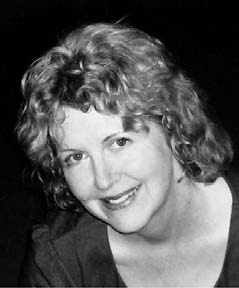
Victoria Hanley
We know that reading and writing go hand in hand. One cannot exist without the other. Much time is spent by us teachers and librarians in promoting both ends of this spectrum. We work hard to connect the right reader with the right book at the right time. We encourage readers to select books for pleasure, information, and enlightenment, and to appreciate the varied writing styles of the authors. Likewise, we try to teach teens the personal benefits of writing for enjoyment, self expression, and effective communication.
Interesting and relevant writing lessons and activities in the classroom help to steer teens in the right directions. However, the significance of good writing is especially enhanced when teens have an opportunity to discover that creating with words is something they can do independently whenever they choose, just like with reading. Even better is when they have opportunities to reach a reading or listening audience with what they have created, if that is what they desire.
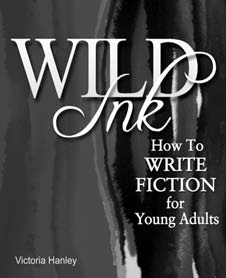
Many teens enjoy keeping a journal, crafting poetry, writing short stories, and even writing novels. They dream of being published someday. They often seek out places where they can share their writing, get feedback, and improve. School and public libraries today are hopping on the bandwagon by providing places like these where teens can get together in creative writing clubs, compete in poetry slams, create teen literary magazines and newsletters, and write book reviews. Many after-school teen creative writing groups not only give teens a forum to share their work, play with words, and develop ideas, but they also bring in authors to give tips on how to be a better writer and how to get published. Victoria Hanley is one of those authors.
Recently, at my library, Victoria did a workshop for our teen creative writing club on creating memorable characters. She combined fun and thought-provoking activities that encouraged the teens to explore new approaches and perspectives. Using props and exercises with descriptive words, the teens learned how to make their stories more effective by developing believable characters readers can clearly see. A side benefit to having published authors like Victoria share their words of wisdom with teens is that they can tell firsthand about the publishing world in addition to making recommendations on how to be a better writer.
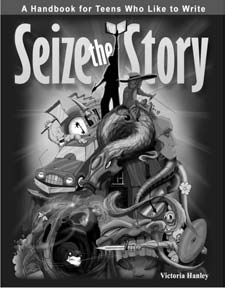
Victoria is an especially excellent presenter for encouraging teens to read as well as write because she not only has three wonderful fantasy novels, but she has also written two excellent new guidebooks on the craft of writing. One is for adults who want to write for teens, called Wild Ink . The other, Seize the Story , is for young adults who want to learn to write and to become better writers. Both books include not only step by step advice, activities, and information on building and improving writing skills, but they also include inspiring words of wisdom from an array of well known young adult authors.
These books are truly a labor of love, because Victoria deeply believes in the value of the written word, connecting reading and writing, and encouraging writers to be the best they can be. She communicates well with teens in sharing these important messages. One boy, who told me that he never really thought much about creative writing before, sent me an email message:
“After attending the creative writing club with Victoria Hanley I got pretty interested in writing. I am curious if we can get more information on Mrs. Hanley’s guide, Seize the Story , since it would help me become a better writer.”
Try Seize the Story with your aspiring teen writers, and recommend Wild Ink to any adult writers who dream of writing a great young adult novel (perhaps even you!). Nurturing the writer in teens and the writer in adults who wish to create appealing literature for teens is a vital part of perpetuating that all-important reading-writing link.
An Interview with Victoria Hanley
DT: When did you start writing? When did you decide you wanted a career as a writer?
VH: As a child I amused myself by making up stories. I’d lie in bed when I was supposed to be sleeping, and imagine other lands where people were doing fascinating things. By fifth grade I knew I wanted to be a writer, but it took several more decades to really find my way as an author.
DT: Did you always enjoy fantasy books? Is that the reason you decided to write in this genre?
VH: I grew up in a household without a TV. We lived next door to a library for a while, and at one point I checked out all the books in the fairy tale section. I remember the librarian’s quiet smile as I’d bring back one stack and exchange it for another. But I also read and enjoyed many other genres. It wasn’t a reasonable decision to write fantasy—it was just that when I tried to write contemporary novels, my mind resembled a blank screen. Nothing occurred to me. Nothing!
DT: What inspired you to write your three popular fantasy books, The Seer and the Sword, The Healer’s Keep , and The Light of the Oracle?
VH: The main characters for The Seer and the Sword made an appearance one night and then haunted me for over five years before I began to write them down. Does that count as inspiration? For me, characters tend to show up, stay on to help with the work of writing their stories, and then occasionally deign to visit after a book is finished. Plus, I wanted to write books for my children. That’s always a powerful motivator.
DT: Tell me about your newest books, Seize the Story and Wild Ink . What inspired you to write them?
VH: Seize the Story takes readers all the way through the process of writing fiction, from beginning to end. Every element, from dialogue to setting, plotting to character creation, is laid out and illustrated with examples. But the tone of the book is not that of a dry writing manual—it’s definitely written for teenagers. While writing it, I imagined a group of teens sitting in front of me.
One of the most wonderful things about Seize the Story is that it includes interviews with YA authors besides myself—authors like Joan Bauer, Chris Crutcher, David Lubar, Lauren Myracle, and many more—who also give teens their best advice on writing.
Wild Ink is essentially a grown-up’s guide to writing fiction for young adults, although the section on publishing could also be useful to the more advanced teen writers who want to know the ropes about submitting their manuscripts and what to expect from agents and publishers.
As for what inspired me to write Seize the Story —I’ve now spoken to thousands of teens about writing fiction, and led many writing workshops. The kids soak in the information so fast, their writing often improves dramatically during a single session. But it’s impossible to cover all the elements of fiction in one or two talks. Many students are eager to follow through with more, and now, with Seize the Story , I can leave them something to work with if they want to continue writing.
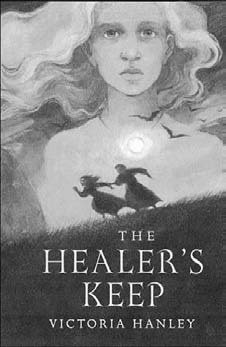
Wild Ink was inspired when I led a number of workshops for adults about writing for teenagers. Participants were so full of questions, it seemed as if it would take a book to answer them all. Again, the tone of the book isn’t dry, even though there’s plenty of information about submitting to agents and editors and all that. It’s more about the heart of young adult (YA) literature—how to understand it, how to connect with your own teen material, and how to get past the obstacles so many writers face, obstacles like time, self-doubt, and rejection. Wild Ink also features writing advice and interviews with twenty other authors active in the field today.
DT: You recently did a session on creative writing, focusing on creating memorable characters, for the teen Creative Writing Club at my library. Why do you think it is important for authors to connect directly with teens about the art of writing?
VH: When aspiring young writers meet a published author, it puts a real face on the experience of creating a book. For instance, I like to show teens an example of an actual first draft, a complete mess of crossed out scribbles. That way, teens understand it’s okay, it’s natural, it’s to be expected if their first attempts don’t match the vision they have for the story they want to tell. They’re reassured to find they’re really on track even when they feel as if they’re stumbling or losing ground.
The mix of self-expression and creativity that writing affords can be enormously rewarding—even therapeutic—to adolescents. And authors of young adult literature have a deep affinity for the travails associated with coming of age. (After all, that’s what we write about.) I think teens can sense the fact that we respect them, and it makes a good opening for exchanging knowledge.
DT: What advice would you give to teachers and librarians who want to nurture an interest in creative writing among the teens with whom we work?
VH: The most primary advice you already know—encourage reading! Teachers and librarians are familiar with a thousand benefits of reading. It’s so good for the mind. It’s good for the heart. And it’s great for learning grammar by osmosis.
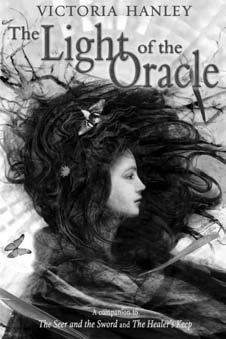
Another suggestion: Encourage teens to engage in free journaling. By free, I mean write whatever comes to mind. It’s fine to use good grammar or bad, be neat or very messy, make perfect sense or ramble incoherently. The point is to give the imagination a place to run free. When teens get into the habit of regular writing in a free journal, they forge a strong bond with the writer they have inside. It’s like making a friend who will never be lost, a friend who can see them through rough times and smooth, a friend who will help them open up to their own creative imagination. When they make a safe creative space, their stories will start to come through. And important as it is to eventually learn writing techniques, it’s even more important to remember that the most important thing about a story is the story.
DT: What new writing projects do you have in the wings? Any new fantasy books (or other kinds of books)?
VH: It was great fun to make a foray into nonfiction, and my publisher, Cottonwood Press, has been remarkably wonderful to work with. But now I’m eager to get back to fiction, and I’m working on a couple of fantasy books.
Victoria Hanley enjoys beating the odds and encouraging others to go for it too. She believes it’s never too early or too late to get going on a book. Published in ten languages, her books have won awards at home and abroad. For more info, visit: www.victoriahanley.com and www.cottonwoodpress.com.
Diane Tuccillo, a past ALAN President, is Teen Services Librarian at the Fort Collins Regional Library District in Colorado. She contributes regular articles to the professional literature, teaches university courses online, and reviews for School Library Journal and Voice of Youth Advocates. She is the author of Library Teen Advisory Groups: A VOYA Guide (Scarecrow, 2005) .
Books by Victoria Hanley
Hanley, Victoria. The Healer’s Keep . New York: Holiday House, 2002.
———. The Light of the Oracle . New York: David Fickling Books, 2005.
———. The Seer and the Sword . New York: Holiday House, 2000.
———. Seize the Story: A Handbook for Teens Who Like to Write . Fort Collins, CO: Cottonwood Press, 2008.
———. Wild Ink: How to Write Fiction for Young Adults . Fort Collins, CO: Cottonwood Press, 2008.